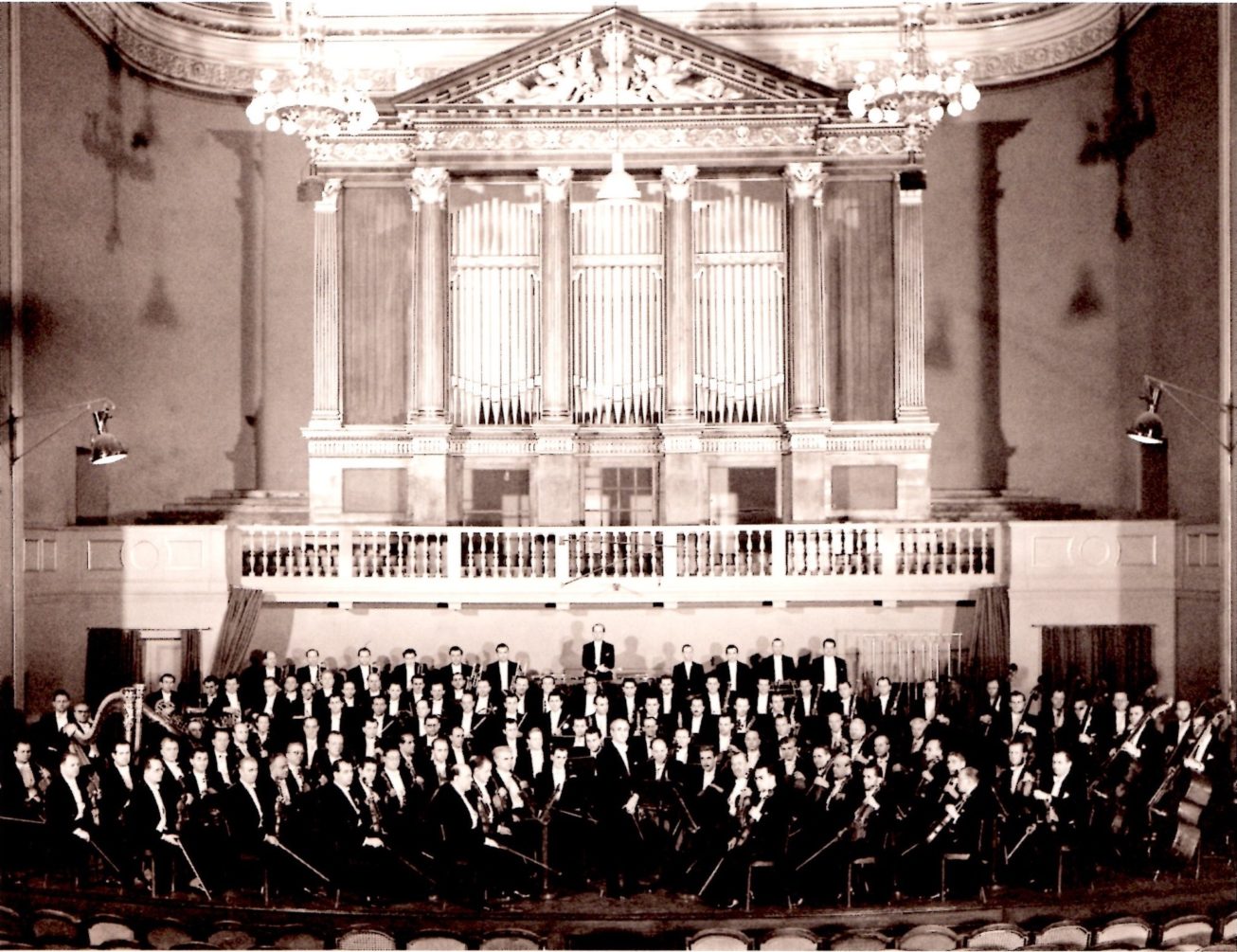Auteur/autrice : C&A HD

A la demande amicale d’un habitué de ce blog / At the request of a friend of this blog:
Mozart Divertimento n°15 en si bémol majeur K.287 « Zweite Lodronische Nachtmusik »
Wiener Oktett: Willi Boskovsky, Violine I; Philipp Matheis, Violine II;
Günther Breitenbach, Bratsche; Johann Krump, Kontrabass;
Josef Veleba & Josef Lackner, Horn
Wien Musikverein Brahmssaal – 4-7 April 1955
Pr: Victor Olof & Peter Andry; Eng: Cyril Windebank
Source: 33t/LP: London LL 1239
Violon I: Willi Boskovsky (1908-1991) « Stimmführer » des Violons I de 1934 à 1938, puis Konzertmeister de 1938 à 1970; Violon I du Wiener Oktett de 1947 à 1959
Violon II: Philipp Matheis (1918-1975) « Stimmführer » des violons I de 1954 à 1958, puis de 1968 à 1974; Violon II du Wiener Oktett de 1947 à 1968
Alto: Günther Breitenbach (1911-1992) « Stimmführer » de 1958 à 1977; membre du Wiener Oktett de 1947 à 1972
Contrebasse: Johann Krump (1889-1974) « Stimmführer » de 1938 à 1951 Contrebasse solo de 1951 à 1955; membre du Wiener Oktett de 1947 à 1964
Cor I: Josef Veleba (1914-1997) Cor solo de 1940 à 1968; 3ème Cor de 1968 à 1971, puis 4ème Cor de 1971 à 1977; membre du Wiener Oktett de 1947 à 1967
Cor II: Josef Lackner (1908-1996) 4ème Cor de 1941 à 1942, puis 2ème Cor de 1942 à 1973
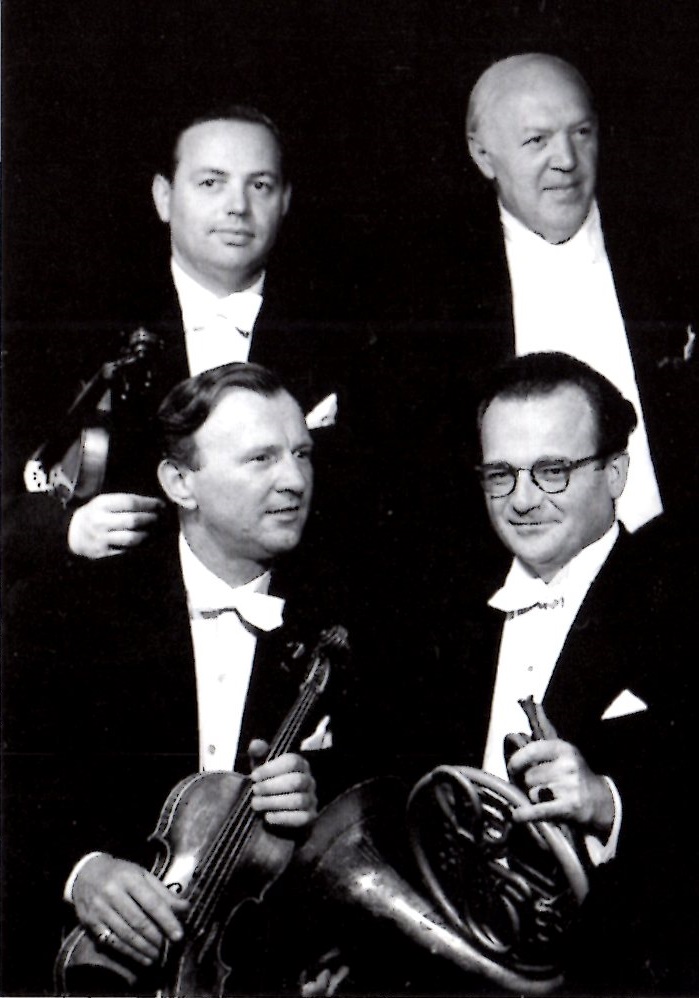
1er rang/First row: Willi Boskovsky & Josef Veleba / 2ème rang/Second row: Philipp Matheis & Johann Krump
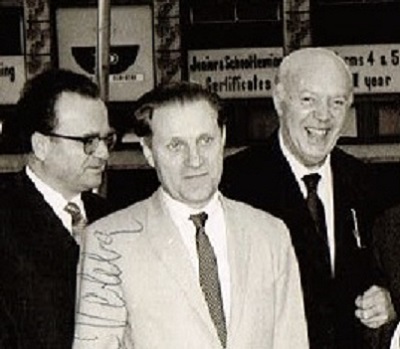
Josef Veleba, Günther Breitenbach & Johann Krump (Johannesburg 1962)
Ce Divertimento, écrit à l’origine pour un sextuor (2 violons, alto, contrebasse et 2 cors), est le plus souvent joué dans une version orchestrale, et bien qu’il en existe des enregistrements sous la baguette de chefs mozartiens reconnus (Walter, Toscanini, Karajan, Münchinger, Vegh etc…, sans oublier Willi Boskovsky et son Wiener Mozart Ensemble), la version de musique de chambre reste de loin préférable.
Et ici, son interprétation par des musiciens fondateurs en 1947 du Wiener Oktett, dans un style proche de la musique populaire, convient particulièrement à cette œuvre qui utilise deux thèmes favoris du public: « Heissa, hurtig, ich bin Hans » (« Allez, hop-là, je suis Hans ») dans l’Andante grazioso con Variazioni (II) et, avec beaucoup d’humour, « D’Bauerin hat d’Katz verlor’n » (« La fermière a perdu son chat ») dans le dernier mouvement (VI).
Si on parle beaucoup à propos de la musique de cette époque d’interprétations historiquement informées, il s’agit d’une logique musicologique qui, pour rigoureuse qu’elle soit, n’est pas forcément plus pertinente que la tradition d’interprétation issue en ligne directe de la musique populaire et illustrée ici par des musiciens du plus grand orchestre d’Autriche.
Cette version de 1955 qui n’existe qu’en mono a été publiée en 1956 à l’occasion du bi-centenaire de la naissance de Mozart (puis en 1957), mais, comme le Wiener Oktett a enregistré une nouvelle version stéréophonique en 1962 (avec comme premier violon Anton Fietz qui a succédé en 1959 à Willi Boskovsky), ces microsillons n’ont jamais été ré-édités. Les reprises ultérieures sont un CD paru au Japon en 1999 (POCL4638) et le double Album Decca Eloquence paru en 2011 (4804328).
La première tentative recensée d’une prise de son stéréophonique à Vienne par Decca a suivi immédiatement cet enregistrement. Il s’agit de l’ « Eroïca » de Beethoven avec le WPO sous la direction d’Erich Kleiber, captée à la Musikvereinsaal du 11 au 14 avril 1955, avec les mêmes producteurs et comme ingénieurs du son Cyril Windebank et Gil Went pour la mono, et Roy Wallace pour la stéréo. En raison du résultat jugé insatisfaisant, la bande stéréo a malheureusement été effacée.
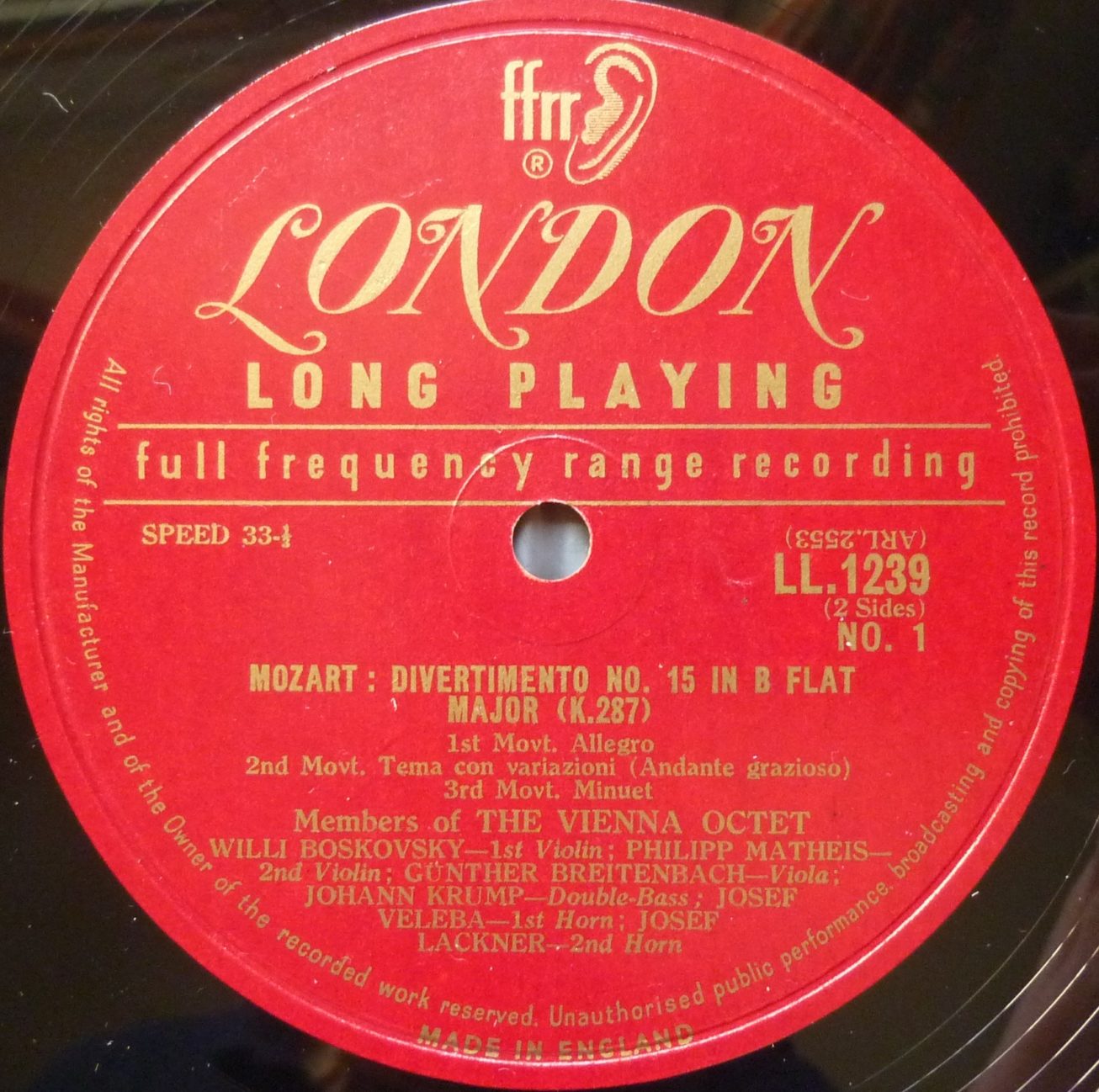

Mozart Divertimento n°15 in B flat major K.287 « Second Lodron Nightmusic »
Wiener Oktett: Willi Boskovsky, Violine I; Philipp Matheis, Violine II;
Günther Breitenbach, Bratsche; Johann Krump, Kontrabass;
Josef Veleba & Josef Lackner, Horn
Wien Musikverein Brahmssaal – 4-7 April 1955
Pr: Victor Olof & Peter Andry; Eng: Cyril Windebank
Source: 33t/LP: London LL 1239
Violin I: Willi Boskovsky (1908-1991) « Stimmführer » of Violins I from 1934 to 1938, then Konzertmeister from 1938 to 1970; Violin I of Wiener Oktett from 1947 to 1959
Violin II: Philipp Matheis (1918-1975) « Stimmführer » of Violins I from 1954 to 1958, then from 1968 to 1974; Violin II of Wiener Oktett from 1947 to 1968
Viola: Günther Breitenbach (1911-1992) « Stimmführer » from 1958 to 1977; member of Wiener Oktett from 1947 to 1972
Double-bass: Johann Krump (1889-1974) « Stimmführer » from 1938 to 1951, soloist from 1951 to 1955; member of Wiener Oktett from 1947 to 1964
Horn I: Josef Veleba (1914-1997) solo Horn from 1940 to 1968; 3rd Horn from 1968 to 1971, then 4th Horn from 1971 to 1977; member of Wiener Oktett from 1947 to 1967
Horn II: Josef Lackner (1908-1996) 4th Horn from 1941 to 1942, then 2nd Horn from 1942 to 1973
This Divertimento, originally written as a Sextet (2 violins, viola, double-bass and 2 horns), is generally performed in its orchestral version, and although it has ben recorded by notable mozartian conductors (Walter, Toscanini, Karajan, Münchinger, Vegh etc…, without forgetting Willi Boskovsky and his Wiener Mozart Ensemble), the chamber music version remains by far preferable.
And here, its performance by founding members in 1947 of the Wiener Oktett, in a style close to popular music is especially relevant for this work using two folk songs: « Heissa, hurtig, ich bin Hans » (« Hello, go on, I am Hans ») in the Andante grazioso con Variazioni (II) and, with much fun, « D’Bauerin hat d’Katz verlor’n » (« The farmer has lost her cat ») in the last movement (VI).
If much is said about historically informed performances concerning music of that period, this has to do with a musicological approach, which though serious-minded, is not necessarily more relevant than the performing tradition directly coming from popular music and illustrated here by musicians of the greatest orchestra in Austria.
This 1955 version which exists only in mono was published in 1956 for the Mozart year (and also in 1957), but, as the Wiener Oktett recorded a new stereophonic version in 1962 (with as Violin I Anton Fietz who replaced Willi Boskovsky in 1959), these LPs have never been re-issued. The later publications are a CD published in Japan in 1999 (POCL4638) and the 2-CD Album « Decca Eloquence » published in 2011 (4804328).
The first attempt by Decca in Vienna of a stereophonic recording came immediately after this recording. It was Beethoven’s « Eroïca » with the WPO conducted by Erich Kleiber, at the Musikvereinsaal between April 11 to 14, 1955, with the same producers and as recording engineers Cyril Windebank et Gil Went for mono, and Roy Wallace for stereo. However, since the result was considered as being insufficient, the stereo tape has been unfortunately erased.
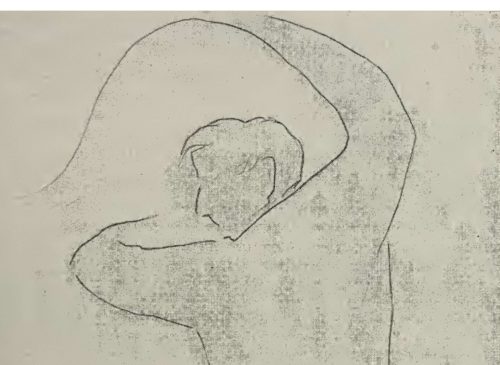
Albert Roussel Charles Munch BSO
Symphonie n°3 Op.42 Boston Symphony Hall – February 7, 1964
Symphonie n°4 Op.53 Boston Symphony Hall – February 12, 1965
Bacchus et Ariane Suite n°2 – Tokyo Hibiya Kokaido May 5, 1960
Source: Bande/Tape 2 pistes 19 cm/s / 2 tracks 7.5 ips
Dès le début de sa carrière de chef d’orchestre, Charles Munch a dirigé des œuvres d’Albert Roussel, à savoir: en 1933 Bacchus et Ariane, en 1934 le Psaume LXXX, et en 1937 la Rhapsodie Flamande, et à chaque fois, à la grande satisfaction du compositeur.
Il est surprenant qu’au cours dès treize années pendant lesquelles il a été le directeur musical du BSO, il n’ait enregistré pour le disque que la Suite n°2 de Bacchus et Ariane. En effet, à Boston, il a dirigé la Symphonie n°3 Op.42 en 1947, 1948, 1951 et 1954 et la Symphonie n°4 Op.53 en 1949 et en 1959, à chaque fois pour une série de concerts comme c’était l’usage à Boston, mais aussi le Concerto pour piano, le Festin de l’Araignée, la Suite en fa, et la Rhapsodie Flamande.
Après sa démission en 1962, il est revenu tous les ans à Boston comme chef invité, en programmant la Symphonie n°3 Op.42 en 1964 puis la n°4 Op.53 en 1965, l’année de ses enregistrements de ces deux symphonies (et de la Suite en fa) avec l’Orchestre Lamoureux, qui sont immédiatement devenus des références discographiques. Ces enregistrements publics qui documentent ses interprétations à Boston de deux œuvres au cœur de son répertoire n’en sont que plus précieux.
Ses derniers concerts avec le BSO ont eu lieu les 18, 19, 20, 23 et 25 janvier 1968 avec l’audition intégrale du Roméo et Juliette de Berlioz.
La Suite n°2 de Bacchus et Ariane était un des chevaux de bataille de Munch, avec pas moins de 70 exécutions avec le BSO entre 1946 et 1965, dont 7 au cours de la tournée de 1960 (« Far East Tour »). Au cours de cette très longue tournée qui s’est étendue du 29 avril au 17 juin, l’orchestre, sous la direction de Charles Munch, d’Aaron Copland et de Richard Burgin (Concert-master de l’orchestre), a donné 34 concerts à Taïwan, au Japon, aux Philippines, en Australie et en Nouvelle Zélande.
Le concert public du 5 mai a eu lieu le lendemain du concert officiel télévisé donné à Tokyo dans la Salle de concert de la NHK (Beethoven Symphonie n°3, Ravel Daphnis et Chloé Suite n°2), le tout premier concert du BSO au Japon (DVD NHK Classical NSDS-9486).
____________
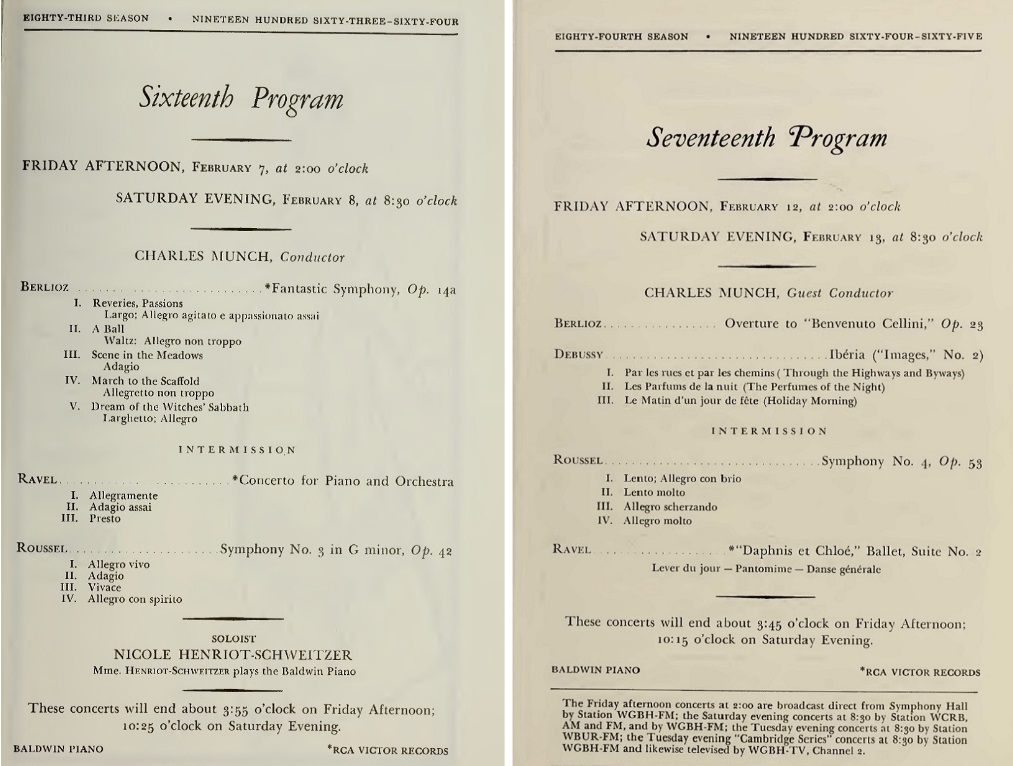
____________
Since the beginning of his career as a conductor, Charles Munch performed works by Albert Roussel, namely: in 1933 « Bacchus et Ariane », in 1934 the Psalm LXXX, and in 1937 the « Rhapsodie Flamande » (Flemish Rapsody), and each time the composer was very happy with his performances.
It is surprising that, during his thirteen year tenure as music director of the BSO, he only recorded commercially the Suite n°2 of « Bacchus et Ariane ». Indeed, in Boston, he conducted the Symphony n°3 Op.42 in 1947, 1948, 1951 and 1954, and the Symphony n°4 Op.53 in 1949 and in 1959, each time for a series of concert, as was usual in Boston, but also the Piano Concerto, the « Festin de l’Araignée » (Spider’s Feast), the Suite in F, and the « Rhapsodie Flamande » (Flemish Rapsody).
After he resigned in 1962, he came back to Boston every year as guest conductor, and he performed the Symphony n°3 Op.42 in 1964 and then n°4 Op.53 in 1965, the very year when he recorded commercialy both Symphonies (as well as the Suite in F) with the Lamoureux Orchestra, which immediately became reference recordings. These public performances which document his interpretations in Boston of these two works at the very heart of his repertoire are all the more treasurable.
His last concerts with the BSO took place January 18, 19, 20, 23 and 25, 1968 with complete performances of Berlioz’s « Roméo et Juliette ».
Suite n°2 of « Bacchus et Ariane » was one of Munch’s favourites, with no less than 70 performances with the BSO between 1946 et 1965, 7 of them during the 1960 Tour (« Far East Tour »). During this very long Tour which took place between April 29 and June 17, the orchestra, conducted by Charles Munch, Aaron Copland and Richard Burgin (the orchestra Concert-master), gave 34 concerts in Taïwan, Japan, Philippine Islands, Australia and New-Zealand.
The May 5 public concert took place the day after the official televised concert given in Tokyo in the NHK Concert Hall (Beethoven Symphony n°3, Ravel « Daphnis et Chloé » Suite n°2), the very first BSO concert in Japan (DVD NHK Classical NSDS-9486).


Fritz Busch – Das Sinfonie-Orchester Winterthur Peter Rybar, Violine
Enr/Rec: Winterthur Stadthaus Konzertsaal September 1949
Source 33t Brüder-Busch Gesellschaft e.V. (BBG) F 667 293
Peter Rybar connaissait les frères Busch depuis les années trente, et Fritz Busch avait souvent dirigé l’orchestre de Winterthur dont Rybar était le Konzertmeister depuis 1938 (et le premier violon du Quatuor de Winterthur), l’orchestre ayant alors et jusqu’en 1950, pour chef Hermann Scherchen. Notons que Rybar a longtemps été, en alternance avec Michel Schwalbé, Konzertmeister de l’Orchestre du Festival de Lucerne. On connaît ses enregistrements avec Clara Haskil (Brahms Quintette Op.34, Mozart Sonate K.454 et Busoni Sonate n°2 Op.36a). Un autre partenariat régulier était avec Edwin Fischer et le couronnement en a probablement été le concert Beethoven donné au Septembre Musical de Montreux 1951 avec les Concertos n°3 et 4 ainsi que le Triple Concerto, les solistes étant Fischer, Rybar et le violoncelliste Antonio Tusa (remplaçant Enrico Mainardi, malade), qui sera suivi en mai 1952 d’une tournée d’une dizaine de concerts (toujours avec Antonio Tusa) en Allemagne, en Italie et en Suisse avec au programme les 5 Concertos pour piano et le Triple Concerto de Beethoven.
Ayant appris fin août 1949 que Fritz Busch se trouvait en Suisse, à Zürich, pour quelques semaines, Rybar se hâta de lui proposer de faire des enregistrements avec lui à Winterthur pour la firme Concert Hall. Cette situation se reproduira un an plus tard à Vienne avec Marcel Prawy pour une série d’enregistrements (Beethoven Symphonies n°3 et 8, Haydn Symphonie n°101) décidés là aussi à la dernière minute. A Winterthur, Busch enregistra la Sérénade « Haffner » pour laquelle Peter Rybar était le violon solo, la Cinquième Symphonie de Schubert D.485, et deux œuvres de Mendelssohn, l’Ouverture » Die Schöne Melusin » Op.32 et le Scherzo de l’Octuor Op.20. Ces enregistrements ont été réalisées à la Stadthaus de Winterthur, dans la Konzertsaal (1200 places), renommée pour son acoustique. Ils permettent de documenter la relation entre ces deux grands musiciens au sujet de laquelle les biographes sont peu diserts.
Comme le mentionne Peter Rybar dans une interview filmée en 1993, les captations étaient réalisées par mouvements entiers et sans montage. Dans l’édition d’origine, et aussi sur le premier microsillon édité par la BBG, les Andante I (2ème Mouvement) et II (6ème Mouvement) ont été permutés, mais Peter Rybar a confirmé qu’il s’agissait seulement d’un problème de mise en disque pour éviter de couper le 4ème mouvement, et que l’ordre des mouvements devait être rétabli.

Peter Rybar

Fritz Busch

Winterthur Stadthaus
Peter Rybar met the Busch brothers in the 30’s and Fritz Busch often conducted the Winterthur Orchestra of which Rybar was the Konzertmeister since 1938 (and also the first violin of the Winterthur Quartet), the orchestra having then and up to 1950, Hermann Scherchen as music director. It is worth mentioning that Rybar was also, alternating with Michel Schwalbé, Konzertmeister of the Luzerner Festspielorchester. We know of his recordings with Clara Haskil (Brahms Quintet Op.34, Mozart Sonata K.454 and Busoni Sonata n°2 Op.36a). Another regular partnership was with Edwin Fischer, the high point of which being the Beethoven concert at the ‘Septembre Musical de Montreux 1951‘ with Concertos n°3 and 4 as well as the Triple Concerto, the soloists being Fischer, Rybar and cellist Antonio Tusa (remplacing the ailing Enrico Mainardi), followed in May 1952 by a tour (also with Antonio Tusa) of about ten concerts in Germany, in Italy and in Switzerland with Beethoven’s 5 Piano Concertos and his Triple Concerto.
Having learned toward the end of August 1949 that Fritz Busch was in Switzerland, in Zürich, for a few weeks, Rybar lost no time and proposed him to make recordings with him in Winterthur for the firm Concert Hall. This situation happened again one year later in Vienna with Marcel Prawy for a series of recordings (Beethoven Symphonies n°3 et 8, Haydn Symphony n°101), also a last minute decision. In Winterthur, Busch recorded the « Haffner » Serenade for which Peter Rybar played solo violin, Schubert’s Fifth Symphony D.485, and two works by Mendelssohn, the Overture » Die Schöne Melusin » Op.32 and the Scherzo from Octet Op.20. These recordings were made at the Winterthur Stadthaus, in the Konzertsaal (seating 1200), known for its acoustics. They allow to document the relationship between these two great musicians about which the biographers say much too little.
As Peter Rybar points out in a 1993 filmed interview, the takes were comprised of complete movements with no edit. On the original LP, and also on the first LP issued by the BBG, Andante I (2 nd Movement) and II (6th Movement) were permuted, but Peter Rybar confirmed that it was only for the purpose of avoiding on the LP a cut in the middle of the 4th Movement, and that the original order had to be restored.
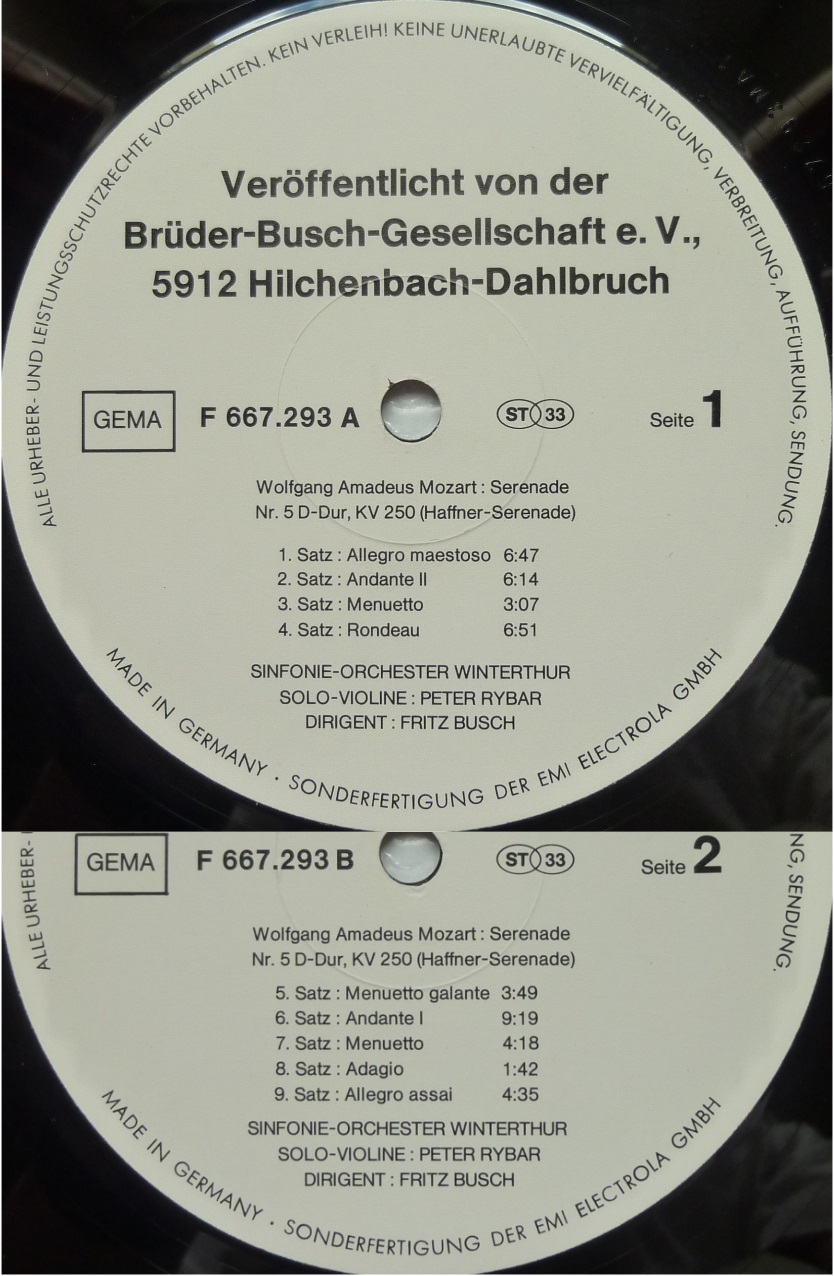

Roger Désormière
Debussy La Mer (De l’aube à midi sur la mer – Jeux de vagues – Dialogue du vent et de la mer)
2 Nocturnes (Nuages – Fêtes)
Ravel Boléro
Česká filharmonie – Czech Philharmonic Orchestra
Enregistrement /Recording: Praha/Prague – Octobre 1950
Source: 33t./LP Supraphon (Ariolia-Eurodisc) 913296 (300104)
Ces captations d’œuvres de Debussy et Ravel font partie de la série d’enregistrements réalisés par Roger Désormière à Prague en octobre 1950, probablement au studio Domovina, quasi-simultanément avec la nomination – le 20 octobre – de Karel Ančerl comme chef titulaire de l’Orchestre philharmonique Tchèque. On ne sait pas si, à cette occasion, Désormière a dirigé des concerts publics avec cet orchestre. Par contre, on sait qu’il a donné le 24 mai au Printemps de Prague (Pražské jaro) 1950 un concert à la Salle Smetana avec l’Orchestre de la Radio Tchécoslovaque (Symfonický orchestr Československého rozhlasu) avec notamment: Mozart: Concerto n°21 K.467 (Monique Haas); Berlioz: Carnaval Romain, Ouverture; Milhaud: Symphonie Pastorale et enfin Ravel: Boléro. Espérons que la radio Tchèque ait conservé des enregistrements.
La Mer par Désormière était un des enregistrements préférés de Sviatoslav Richter: ‘Que de fois je me suis mis ce disque (au moins cent), et à chaque fois, j’ai l’impression que c’est la première. C’est une réussite exceptionnelle. Le simple fait que la technique soit parvenue à capter l’inspiration est en soi miraculeux! Je ne connais pas de plus beau disque. L’interprétation, il n’y a rien à en dire. Elle est unique. Roger Désormière!!’
Ce que souligne Richter à propos de la technique est à rapprocher de ce qu‘ Ivan Devriès, metteur en ondes à la RTF (Radiodiffusion-Télévision Française) écrivait à propos de Désormière: ‘Lorsqu’il dirigeait un concert retransmis par la Radio, Désormière attachait la plus grande importance aux nécessités de la technique et travaillait en étroite collaboration avec le metteur en ondes. Il faisait partie des rares chefs qui se soucient autant de la « cabine » que de l’estrade. On pouvait lui demander toutes les modifications désirables, il s’y pliait de bonne grâce dès l’instant où cela devait permettre un meilleur équilibre sonore. « Je fais mon métier, faites le vôtre … mais faites le bien ! », disait-il.‘
Désormière retrouve dans le Boléro de Ravel la tension du discours musical qu’il déploie dans La Mer, en réussissant un crescendo à la fois d’intensité sonore, de tension dramatique et de tension rythmique qui rend son interprétation vraiment mémorable. Et quel orchestre!
Depuis quelques années, la ville de Prague a mis à l’étude un ensemble architectural dénommé Vltavská Filharmonie et comprenant trois salles de concert. Le projet choisi par le jury international a été révélé le 17 mai dernier. C’est celui du studio danois Bjarke Ingels Group (BIG). Vous pouvez le découvrir en cliquant sur les liens suivants:
vltava-philharmonic-hall Vltavská Filharmonie
____________
Karel Ančerl Orchestre Philharmonique Tchèque Rudolfinum 1950 (cliquer sur l’image pour la voir en grand format /click on the picture to enlarge)
_________
These recordings of works by Debussy and Ravel are part of a series made by Roger Désormière in Prague in October 1950, probably at the Domovina Studio, almost simultaneously with the appointment – October 20 – of Karel Ancerl as music director of the Czech Philharmonic Orchestra. It is not known whether, at the time, Désormière conducted live concerts with this orchestra. However, it is documented that Désormière gave on May 24 during the Prague Spring (Pražské jaro) 1950 a concert at the Smetana Hall with the Orchestra of the Tchecoslovakian Radio (Symfonický orchestr Československého rozhlasu) comprising a.o.: Mozart: Concerto n°21 K.467 (Monique Haas); Berlioz: Carnaval Romain, Overture; Milhaud: ‘Symphonie Pastorale‘ and to end with, Ravel‘s Boléro. Let’s hope that the Czech Radio still has recordings.
La Mer by Désormière was one of Sviatoslav Richter‘s favourite recordings: ‘I have played this disc so many times (at least one hundred), and each time, I have the impression it is the first time. It is exceptionally successful. The mere fact that the technique was able to capture the inspiration is in itself a miracle! I don’t know a more beautiful disc. As to the interpretation, there is nothing to be said. It is unique. Roger Désormière!!’
What Richter underlines about the technique seemingly mirrors what Ivan Devriès, metteur en ondes (musical producer) at the RTF (French Radio and Teevision) wrote about Désormière: ‘When he conducted a broadcast concert, Désormière brought the greatest attention to the demands of the technique and he worked in very close relationship with the musical producer. He was one of the very few conductors who paid as much attention to the ‘cabin’ as to the stage. You could ask him all the desirable changes, and he complied with them as long as it would bring a better tonal balance. He used to say: ‘I’m doing my job, do your job, but do it well!
Désormière finds also in Ravel’s Boléro the tension of the musical flow he displays in La Mer, and builds a crescendo of sound, of dramatic tension as well as of rhythmic tension which makes his interpretation so memorable. And what an orchestra!
A few years ago, the City of Prague has initiated a project architectural ensemble named Vltavská Filharmonie and comprised of three concert halls. The one chosen by the international jury has been revealed on May 17. It is the project submitted by the Danish studio Bjarke Ingels Group (BIG). You may discover it by clicking on the following links:
vltava-philharmonic-hall Vltavská Filharmonie
____________
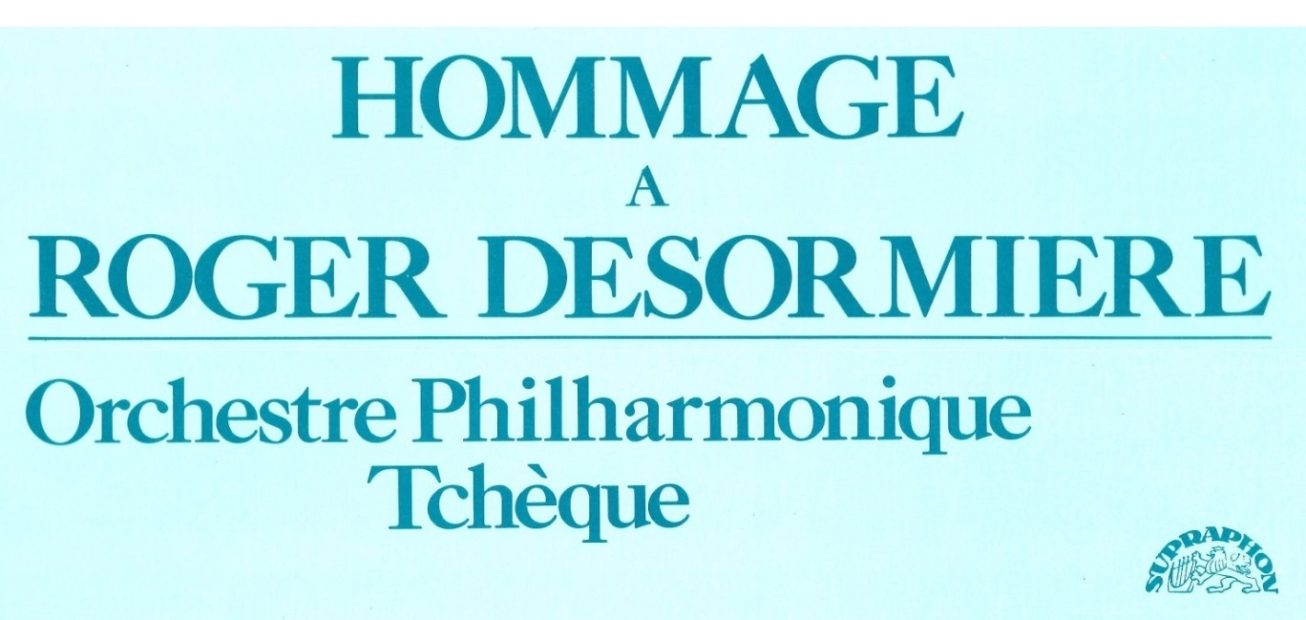
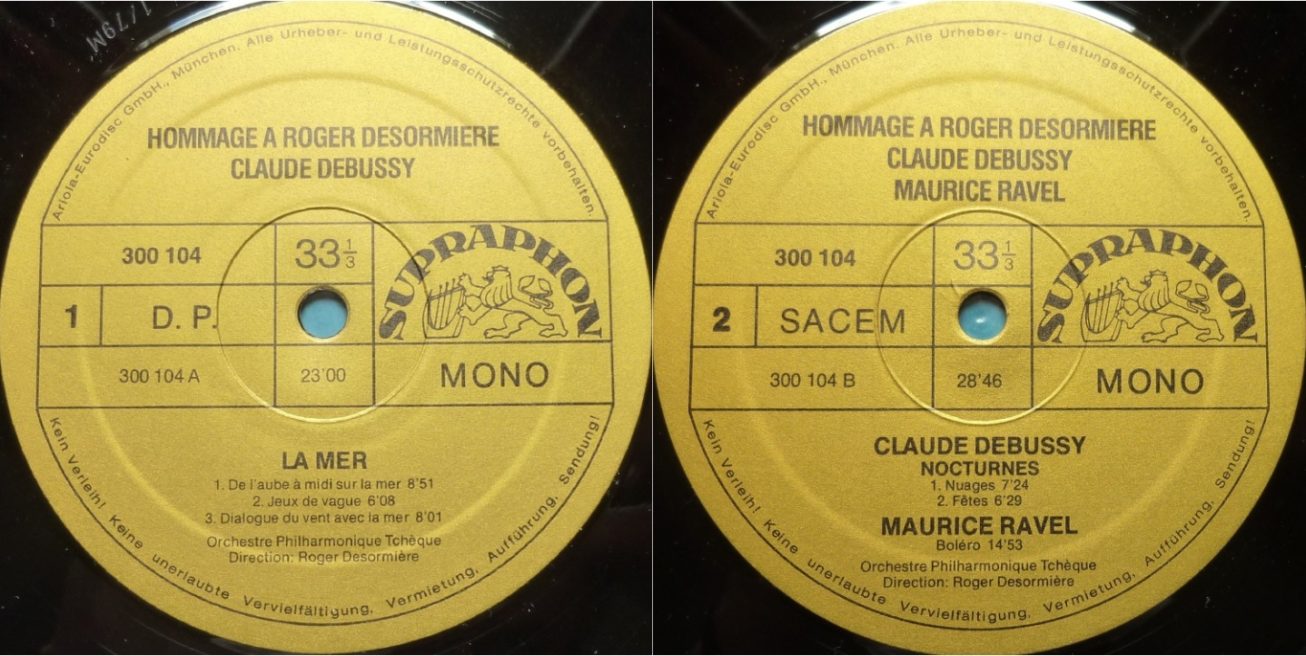

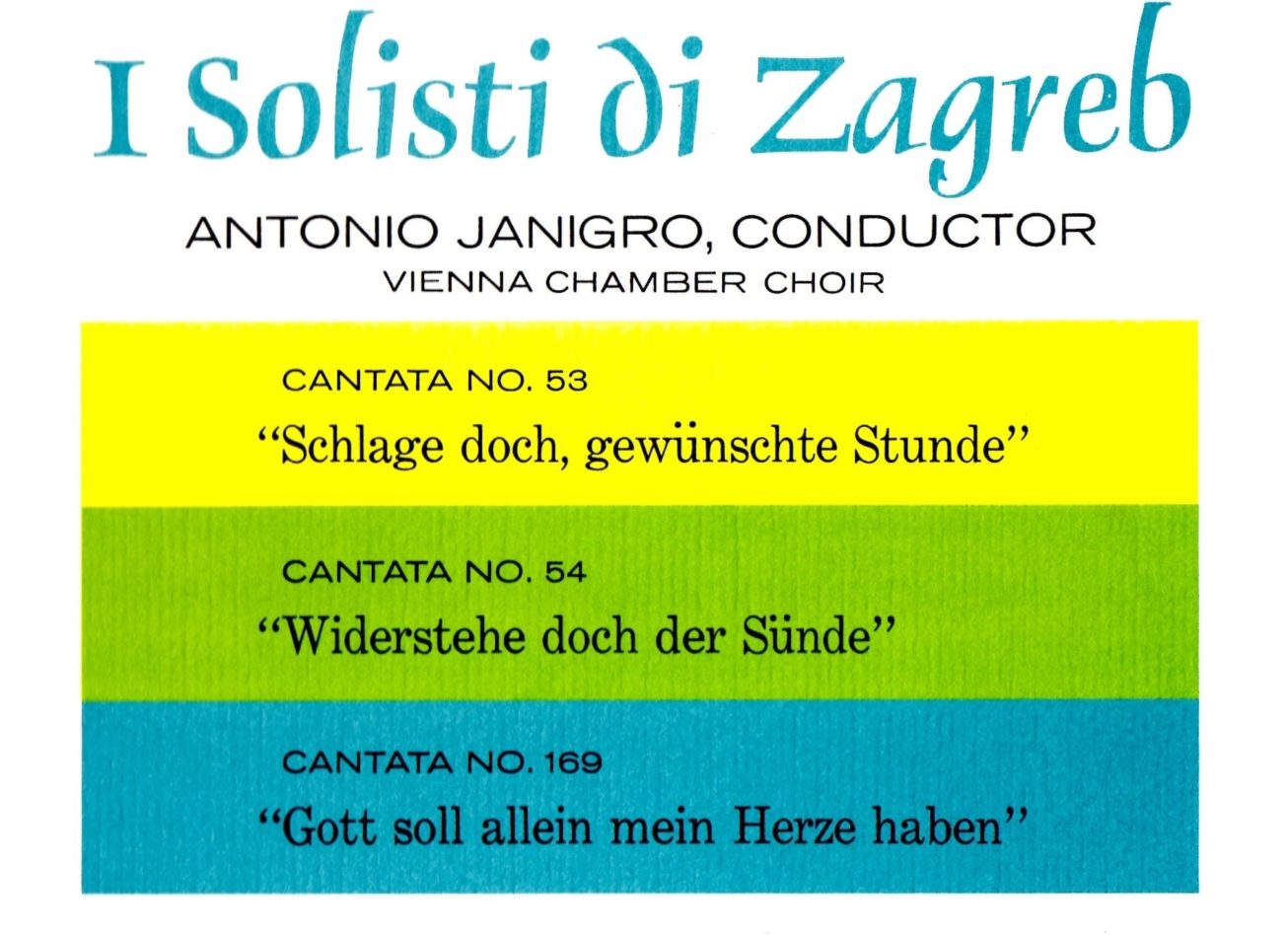
Wien Konzerthaus – June 15-17 1964 Prod: Seymour Solomon Eng: Mario Mizzaro
Cantate BWV 53: Georg Melchior Hoffmann attrib. Johann Sebastian Bach
Ces trois Cantates BWV 53, BWV 54 et BWV 169 ont été enregistrées par Maureen Forrester sous la direction inspirée d’Antonio Janigro le même mois que les Cantates BWV 35 et 42 avec Hermann Scherchen. La prestation à l’orgue d’Anton Heiller dans la BWV 169 est superbe. La prise de son, dans la grande Salle du Wiener Konzerthaus est excellente, et en particulier, la voix incroyable de Maureen Forrester sonne dans sa plénitude.
A l’époque, l’authenticité de la Cantate BWV 53 n’était pas contestée, mais depuis, les musicologues se sont accordés pour affirmer qu’elle n’était pas de Bach, le compositeur le plus probable étant Georg Melchior Hoffmann.
These three Cantatas BWV 53, BWV 54 and BWV 169 have been recorded by Maureen Forrester under the inspired conductor Antonio Janigro the same month as Cantatas BWV 35 and 42 with Hermann Scherchen. Anton Heiller’s organ playing in BWV 169 is superb. The recorded sound, in the great Hall of the Wiener Konzerthaus is excellent, and especially, Maureen Forrester’s incredible voice is heard in its fullness.
The authenticity of Cantata BWV 53 was not challenged then, but since, musicologists have agreed to consider that it was not by Bach, and that it was most probably composed by Georg Melchior Hoffmann.





